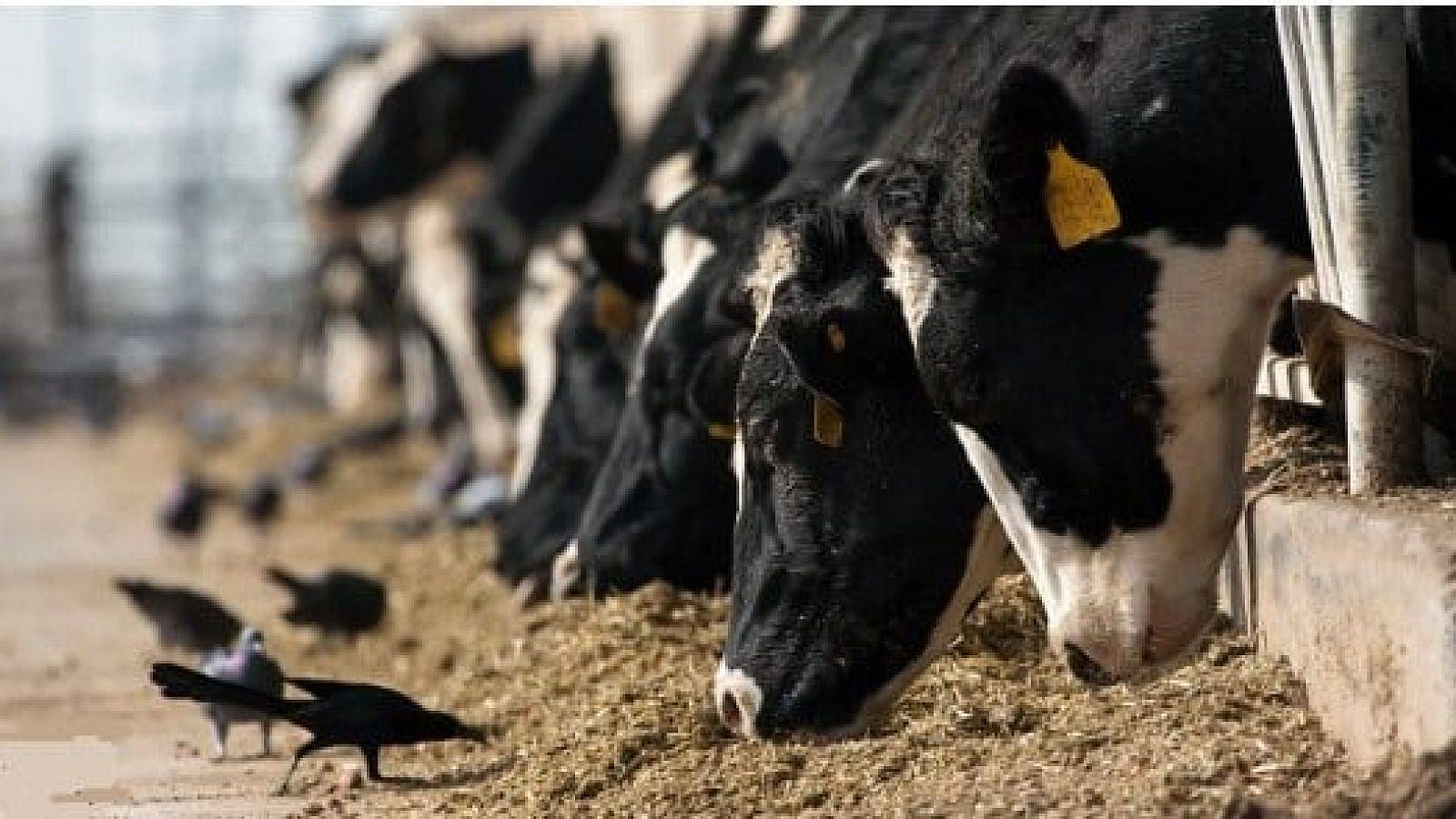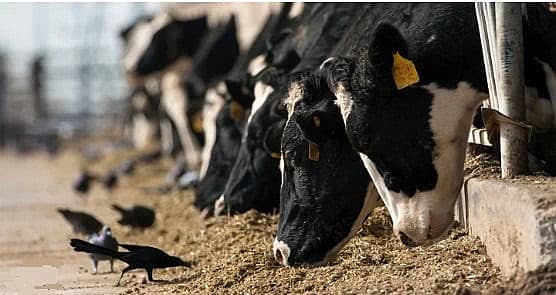AMES, IA – Using a boxed beef index as an external reference price could result in higher or lower fed cattle prices versus other ways of discovering prices, according to a livestock economist.
The CME Group launched a Boxed Beef Index the first week of March 2021. The index is a five-business day volume-weighed moving average of daily Choice and Select cutout values.
 It joins CME’s Feeder Cattle, Lean Hogs, Pork Cutout, and Fresh Bacon indexes.
It joins CME’s Feeder Cattle, Lean Hogs, Pork Cutout, and Fresh Bacon indexes.
CME says the index “will provide a benchmark price that both producers and end users of beef can use to track and forecast price.”
To calculate the index, CME uses data collected by USDA’s Agricultural Marketing Service and published in the National Daily Boxed Beef Cutout and Boxed Beef Cuts Negotiated Sales–Afternoon (LM_XB403) report. USDA has provided those data, in their current form, since 2004.
Market participants who see value in such an index may already be calculating something like it or using the USDA boxed beef cutout data directly.
Possible uses
The index could, conceivably, provide an alternative to negotiated base prices in formula pricing cattle.
In hogs, alternatives and combinations for discovering base prices are more common than in cattle. The Swine or Pork Market Formula category, as reported by USDA, is a formula price based on a market for swine, CME Lean Hog Index, pork or a pork product. The Other Market Formula category is a formula price based on one or more futures or option contracts.
Negotiated fed cattle trade has dwindled from more than 50% of purchases in 2005 to less than 25% in 2020. Market participants, particularly producers, fear that too few cattle trade in negotiated sales to accurately reflect market conditions — and, therefore, the true value of negotiated and formula cattle.
Conceptually, using boxed beef prices for establishing base prices in pricing formulas is appealing, because wholesale beef prices represent the market supply and demand for all beef products. Theoretically, boxed beef prices reflect prices packers receive for beef products across the entire retail, food service and export market spectrum.
As with fed cattle, however, noncash trade-in wholesale beef is common. Consequently, USDA’s LM_XB403 report, and therefore the CME Boxed Beef Index, are based on only a percentage of all beef traded, and may not represent an animal’s true wholesale value. Some insight comes from USDA’s weekly National Comprehensive Boxed Beef Cutout – All Fed Steer/Heifer Sales (LM_XB463) report, which incorporates the volume of all sales methods. For the week ending April 30, 55% of sales were formula, 27% were negotiated for delivery within 21 days, 16% were negotiated for delivery in 22 days or more, and 2% were forward-contracted.
Will index reflect ‘true’ value?
The relationship between live steer and heifer prices of all grades (including negotiated, formula, forward-contract and negotiated grid prices) reported in the National Weekly Fed Cattle Comprehensive report published by USDA and the calculated boxed beef index offers insight. From 2017 to the present, the boxed beef index ranged from $68 per cwt to $351 per cwt above live cattle prices. This variability in farm-to-wholesale beef prices is not necessarily a deterrent to using wholesale-based, farm-level pricing when producers market cattle regularly. Weekly peaks in the spread can offset troughs. However, it is more troublesome for producers marketing cattle infrequently.
More concerning than the week-to-week variability between the boxed beef index and live cattle prices is the trend in the relationship. During 2017, the live cattle value averaged 59% of the boxed beef index value. However, this ratio has trended downward and increased in variability over time. In 2018 the live cattle price was 56% of the wholesale value, 54% in 2019 and 49% in 2020. So far in 2021, the ratio has averaged 49%. The key point is that using a boxed beef index as an external reference price could result in higher or lower fed cattle prices than compared to other ways of discovering prices. It would depend on the formula used, i.e., the percentage of the boxed beef index value.
Additional research is needed to more completely explain this relationship and the value that establishing fed cattle prices off of boxed beef values may provide. For example, in order to say anything about live cattle prices from boxed beef values, you also need a drop value. Byproduct values averaged $9.48 per cwt from 2017 to the present, with a range of $6.71 to $12.05 per cwt, according to the USDA By-Product Drop Value (Steer) FOB Central U.S. (NW_LS441) report, which provides the hide and offal value from a typical slaughter steer.
Assuming a 1,400-pound steer, this equates to between $94 and $169 per head. Furthermore, it is difficult for the standard yields used in the calculation of boxed beef values to include value-added products, so the producer would not be able to capture value from these innovations. Going further, it doesn’t capture case-ready beef, which is expected to keep gaining volume.
Is a boxed beef futures contract coming?
CME says, “Though possible down the road, we have not made any decisions to launch a tradable contract at this time,” and “Currently, we are only publishing the Boxed Beef Index as a courtesy to our market participants …”
Developments in the pork market suggest that CME might offer a boxed beef futures and options contract. CME launched the Pork Cutout Index in 2015. On Nov. 9, the Pork Cutout contract began trading. The Pork Cutout contract, together with the Lean Hog contract, enhances the ability of pork market participants to manage price risk. However, pork may not provide a precedent for beef because the markets are obviously different.
A boxed beef contract would, by necessity, be a cash-settled contract, because of the inherent difficulties in physically delivering boxed beef to satisfy the delivery provisions of a futures contract. The newly developed Boxed Beef Index could be used to settle the contract.
Prior to 2017, live cattle prices and boxed beef prices were comparatively well-correlated, suggesting relatively lower levels of basis or hedging risk associated with cross-hedging boxed beef in Live Cattle futures. Trading one would have been similar to trading the other. Offering another contract would likely have cannibalized volume and open interest from the Live Cattle contract.
A boxed beef contract could complement the currently traded Live Cattle contract. Cattle producers could directly hedge cattle that could be priced off the boxed beef value. Packers could directly hedge revenues or a meat margin, i.e., the difference between the boxed beef value and cattle price. They could also more accurately hedge prices of individual beef cuts. Beef buyers and end users could more accurately hedge prices of individual cuts. At times such as holidays, supply and demand for cattle compared to supply and demand for beef can diverge.
Whether the Boxed Beef Index provides enough information and value to market participants for CME to launch a Boxed Beef contract remains to be seen.











